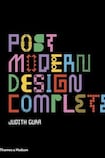
In 1947, as the machines that made war were put to work rebuilding the world they had destroyed, the architect Ludwig Mies van der Rohe declared that the maxim for this new age of “progress” would be: “less is more”. God – if he still existed in the shadow of Auschwitz – was to be found in the stark, minimal details of steel, glass and white concrete boxes. The hero of this new age would be the architect; his gospel, an architecture, that, irrespective of context, from Delhi to Dublin, would be a new “international style” – concrete promises in an age of optimism and progress.
Twenty years later the world had dramatically changed. A liberal youth movement had emerged. Kennedy and King jnr had been assassinated; the Vietnam war raged; there was social unrest in many American cities. The pain of looking forward, into an age of progress, had become greater than that of looking back at the past. One shouldn’t make promises that one cannot keep and the legacy of modernism, now damp and dilapidated, was being demolished. Like the 57-acre, 11-storey, Pruitt-Igoe housing development, in St Louis, Missouri. At 3.32pm, on July 15th, 1972, as explosives detonated, the troubled housing project, like a concrete concertina, collapsed to the ground. This, according to architectural critic and author Charles Jencks, was the moment (or at least symbolic of) the death of modernism.
God’s eye view
A new movement of architecture and design was beginning to emerge. The master architects' one-size-fits-all, city-solving, god's eye view was being replaced by a more pluralistic approach. Transgressing the boundaries of time, fashion and taste, this new movement was bold, playful, colourful and contextual; mixing traditions and metaphors in an attempt to move away from what it saw as its dehumanising predecessor and concern itself with ordinary, everyday people. Modernism was dead, or at best in need of a serious makeover. Less was no longer more; it was, as architect Robert Venturi put it, "a bore". Enter postmodernism; the subject of a comprehensive new book by Judith Gura, Postmodern Design Complete.
In her introduction, Gura, who is professor of design history and theory at the New York School of Interior Design, writes that, “postmodernism is the most provocative, most controversial, most varied and least understood term of 20th-century design”. Or, as one architect told me, it’s like the dark brown sticky stuff that some people spread on their toast in the morning – you either love it or you hate it. Over the next 480 pages, Gura – through the lenses of architecture, interior design, furniture design, product design and graphic design – gives postmodernism its rightful place, among the array of other “isms” used to categorise design movements. Rather than being a passing fad, postmodernism is here to stay, and is now seeing something of a resurgence.
Glossy tomes
Jencks, who wrote the forward to the book, was the first person to associate the word “postmodernism” with architecture. I asked him what he would say to those who might turn their nose up at a book like this: “Get over it, modernists today have to be more aware than to think that there is one modernism at any time.” He points out that for years even Gaudi and Mackintosh were excluded from the “modernist club”.
But for many this book will be hard work – such is the powerful discourse of modernism in design schools. I mean that as an endorsement. It, like its subject is meant to challenge. Unlike the glossy tomes of modernism – admittedly, often softer on the eye – this book, weighing in at 3.5 kg, is here to be wrestled with. To call into question our preconceptions, our ways of seeing the world. The wonderful array of images, the most comprehensive of any book on the subject, will not convince all. But, the best way to understand postmodernism is to inhabit its narrative, to understand its place in cultural history. The reader invested in spending time with the book’s many insightful essays – in particular that by Sean Griffiths, provocateur of the postmodern revival – will find their reward.
Of course, not everything labelled modernist was bad – some of the most beautiful buildings in the world are. Nor was everything labelled postmodernist good – especially, says Jencks, the 1980s “dominant and inflationary approach of Mickey Mouse and Entertainment Architecture”. But, as Gura told me, “I think the most important legacy of postmodernism is the loosening of traces, in terms of freeing up designers to break the rules.” This sums up the importance of a book like this. It comes as a bright, bold, colourful, in-your-face reminder that, in the words of Jencks, designers need to “get over their style hang-ups” their enslavement to fashion, “and look at the existing pluralism, it is the vital global reigning reality”.








